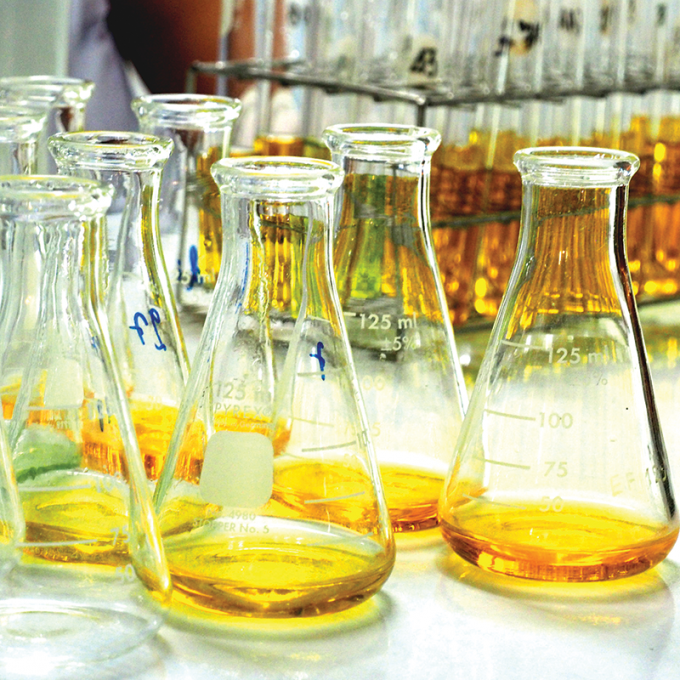Professor Gross's research is focused on the chemical biology of membranes in health and disease.
Biologic membranes are comprised of a structurally diverse array of thousands of distinct chemical entities in a bilayer configuration that are in constant motion providing a rich repertoire of chemical forces that can be used to modulate the conformation and function of transmembrane proteins such as ion channels and ion pumps. Through adaptation of a bilayer structure, membranes serve as a hydrophobic scaffold for the organization of complex supramolecular chemical assemblies that are used in biologic systems as signaling platforms.
These highly specialized signaling assemblies facilitate the transmission of chemical information between intracellular membrane compartments as well as the intercellular flow of information between cells. Biologic membranes also serve as the intracellular storage depot of latent lipid second messengers of signal transduction (e.g., esterified arachidonic acid) that are hydrolyzed by phospholipases in response to changes in a cell’s external environment or after receipt of a chemical or electrical signal from distant cells. Finally, biologic membrane bilayers are the fundamental structural elements responsible for the trafficking of proteins, lipids and nucleic acids to different compartments within cells or, through membrane fusion, for the release of information from a genetically programmed specialized cell into the blood stream (e.g., insulin release into the blood stream from b cells in the pancreas). Our laboratory uses and develops many different chemical methods to study the structure and function of membrane systems to both advance our understanding of the fundamental processes underlying the chemistry of biologic membranes and to use this information to develop new strategies to have a favorable impact on the major disease processes of the 21st century.
Recently, industrialized nations have been afflicted with an epidemic of obesity precipitating the metabolic syndrome (hypertension, diabetes and atherosclerosis). To identify the chemical mechanisms through which obesity predisposes to these disease processes, we have developed a novel technology, termed shotgun lipidomics, which allows the direct identification and quantitation of hundreds of lipid molecular species directly from organic extracts of tissue or biologic fluids.
Shotgun lipidomics is comprised of intrasource separation, multidimensional mass spectrometry, and array analysis. Through the judicious use of stable isotopes, alterations in the kinetics of specific membrane chemical processes, and the dynamics of lipid-protein and lipid-lipid interactions can be readily examined with unprecedented speed and accuracy. Currently we are using this technology to explore altered heart metabolism (metabolomics) through a systematic chemical biology approach. Through the identification of critical metabolic nodes specific to disease states and the effects of pharmaceuticals on the influx and efflux of metabolites into common intermediates, new insights into dysfunctional lipid metabolism in disease and the effects of therapeutic agents can be gathered.
During the last decade, we have made substantial progress in understanding the chemical mechanisms regulating the intracellular phospholipases that release lipid second messengers. Through recombinant DNA techniques, we now express large quantities of these proteins to study their structure and regulatory mechanisms through a variety of chemical and molecular biologic methods. Of particular current interest are the mechanisms that regulate the recognition of membrane surfaces by signaling phospholipases and the resultant alterations in protein structure and function they engender. The recent identification of new signaling mechanisms mediated through phospholipase-calmodulin membrane-associated signaling platforms is rapidly expanding our understanding of the partnership of membranes and proteins in signaling functions. Through exploiting new advances in using both electrospray ionization (ESI) and matrix-assisted laser desorption/ionization (MALDI) time of flight mass spectrometry, many novel chemical mechanisms, and regulating cellular signaling and the activation of phospholipases are being discovered.

